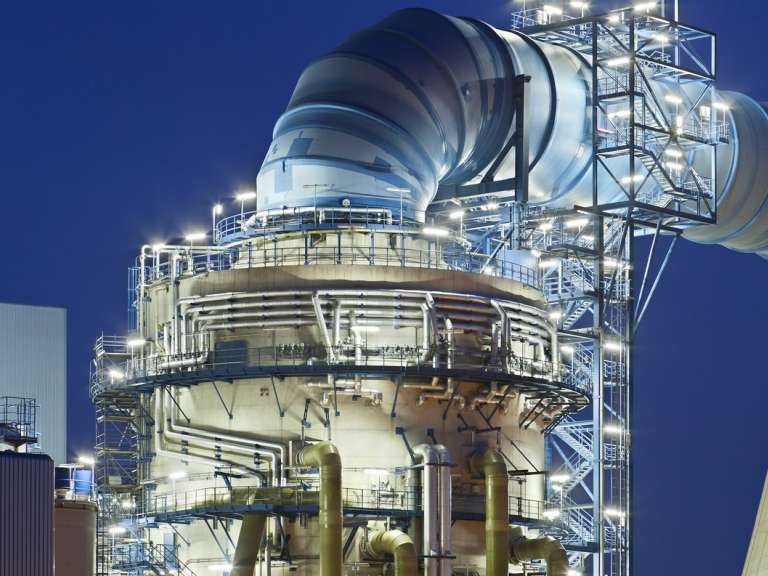Until the 1970s, the use of FGD technology to desulfurize the flue gases from power stations was a rarity. Over the four decades since then, awareness has grown of the harmful impacts of sulfur oxides emissions from power plants on the environment and public health. Consequently, environmental regulations have tightened considerably—first in the developed economies and more recently in the developing world.
Even in countries where economic imperatives have, at times, overridden environmental ones, current or soon-to-be-implemented regulations mean that a new coal-fired power station will almost certainly need to be fitted with FGD technology to capture sulfur dioxide (SO2) and sulfur trioxide (SO3) emissions. In many cases, existing coal-fired power stations will need to be retrofitted with FGD, as regulations continue to tighten.
In Power, Coal Is Still King
Love it or hate it, coal still has the largest share of the world's electricity generation fuel mix—around 41 percent (9,690 TWh) in 2014, according to a technology report published by the International Energy Agency in June 2017. "Coal-fired power generation in the major developed countries, in particular the United States, is on a steep downward trajectory," says the report, "while developing countries are still experiencing coal generation growth."
While coal faces pressures on many fronts—from climate change policies, competitors like natural gas and renewables, and policies aimed at improving local air quality, notably in China, India and other heavily populated areas—it has unquestionable advantages. It is abundant, it is usually a relatively cheap electricity generation option, and modern coal-burning technologies have introduced significant improvements in efficiency. Its main drawback is that selected pollutants need to be removed from the flue gas. Burning coal releases oxides of sulfur (SOx), oxides of nitrogen (NOx), and particulate matter (PM). It also yields carbon dioxide when burned.
Choosing the Right Technology
Capturing carbon dioxide economically is a challenge that has yet to be solved, but technologies to abate coal's other emissions continue to advance. The challenge for asset managers is to select the most appropriate technology, given the trade-offs that need to be made. The choice will depend on: the sulfur content of the coal being burned; the level of desulfurization required to meet regulations; the efficiency of the process, given that parasitic energy consumption varies from technology to technology; and, not least, the increasingly pressing issue of water usage, especially in arid areas or areas subject to drought, such as Australia, China, South Africa, and parts of the United States.
By far, the most common FGD technology is the wet scrubber, accounting for more than four-fifths of total installed worldwide FGD capacity. In a wet scrubber, a reagent such as limestone or lime in the form of a slurry, perhaps with additives, reacts in a spray tower with the oxides of sulfur to form calcium sulphite, which is then oxidized to form calcium sulphate or gypsum.
Wet scrubber systems can be installed on large plants burning coal, including lignite, and oil, including heavy fuel oil. They have an SO2 removal rate of over 99 percent and relatively low auxiliary power consumption of around 1-2 percent, depending on the coal's sulfur content. These systems have proven to be very reliable and in many cases produce saleable gypsum. However, they require large supplies of water and have a relatively high capital cost. For every molecule of SO2 captured, a molecule of CO2 will be released; however, the quantities are very small in comparison to the CO2 released from the combustion process.
Reducing FGD Water Usage
The water consumption issue should not be underestimated, given that a 500-MW power plant employing once-through cooling can use over 12 million gallons per hour (45 million liters per hour) for cooling and other processes. Coal-fired power plant cooling can be the largest user of water, but typically, FGD is the second largest, followed by the boiler.
Water usage can be reduced by using semi-dry scrubbers, such as spray dry scrubbers (SDSs) or circulating dry scrubbers (CDSs), or dry scrubbing technologies.
In an SDS, the reagent slurry has a higher concentration than in a wet system. As the hot flue gas mixes with the slurry, the water in the slurry evaporates. The process forms a dry waste product that is collected with a PM collection device such as a baghouse or an electrostatic precipitator (ESP). Efficiency is generally lower than in a wet scrubber but so is capital cost.
In a dry scrubbing system, powdered reagent is injected directly into the furnace, the economizer, or the downstream ductwork. As with SDS systems, the waste is collected using a baghouse or ESP, and efficiency is generally lower, along with capital cost. That said, the efficiencies of some of the latest technologies are close to those of wet scrubbers.
Seawater FGD
For plants situated on or near to the coast, there is another option—seawater FGD, which has the advantage of producing no waste byproducts and can be used on plants up to 1,000 MW in size. The sulfur dioxide removal rate can be as high as 98 percent.
In the developed world, there has been a tendency for pollution control systems to be implemented piecemeal, as particular regulations have taken effect.
Today, in the developing world, it is becoming possible to leapfrog this approach and instead apply multi-pollutant technologies that can control several pollutants simultaneously. This is becoming a source of opportunity and challenge for both manufacturers of emission control equipment and asset managers.
